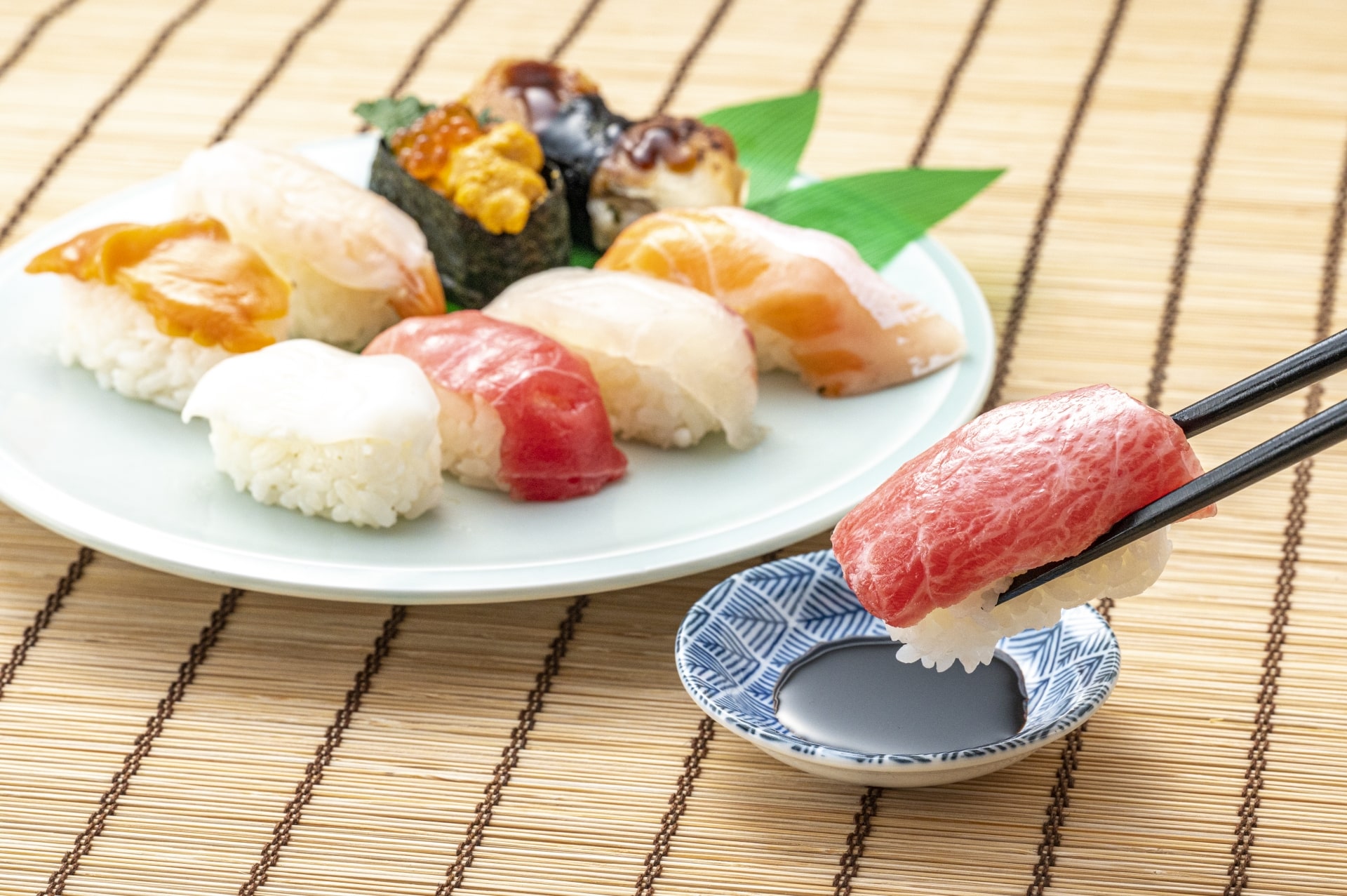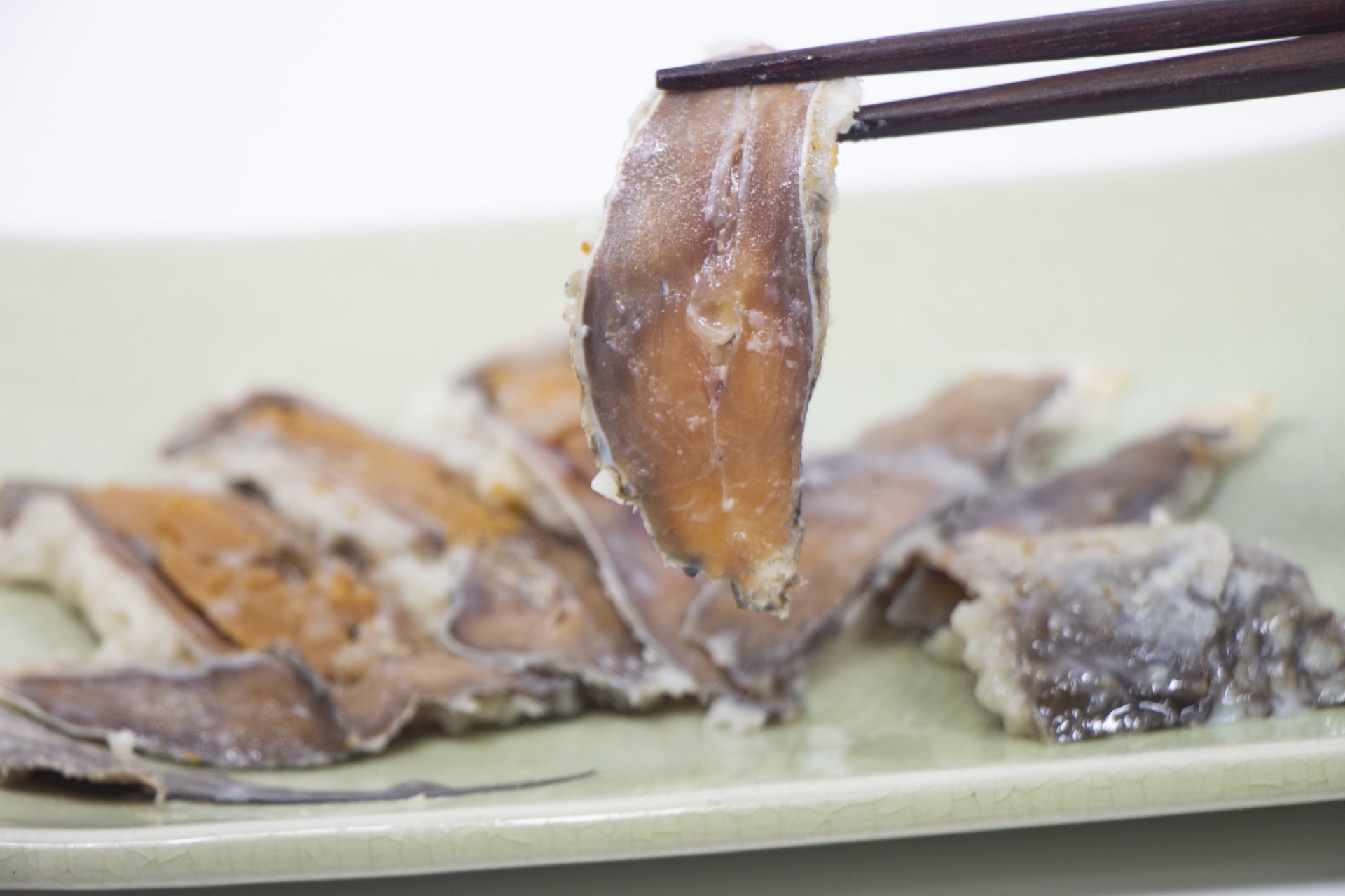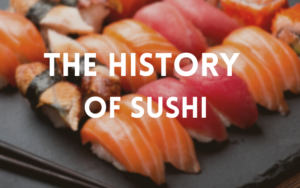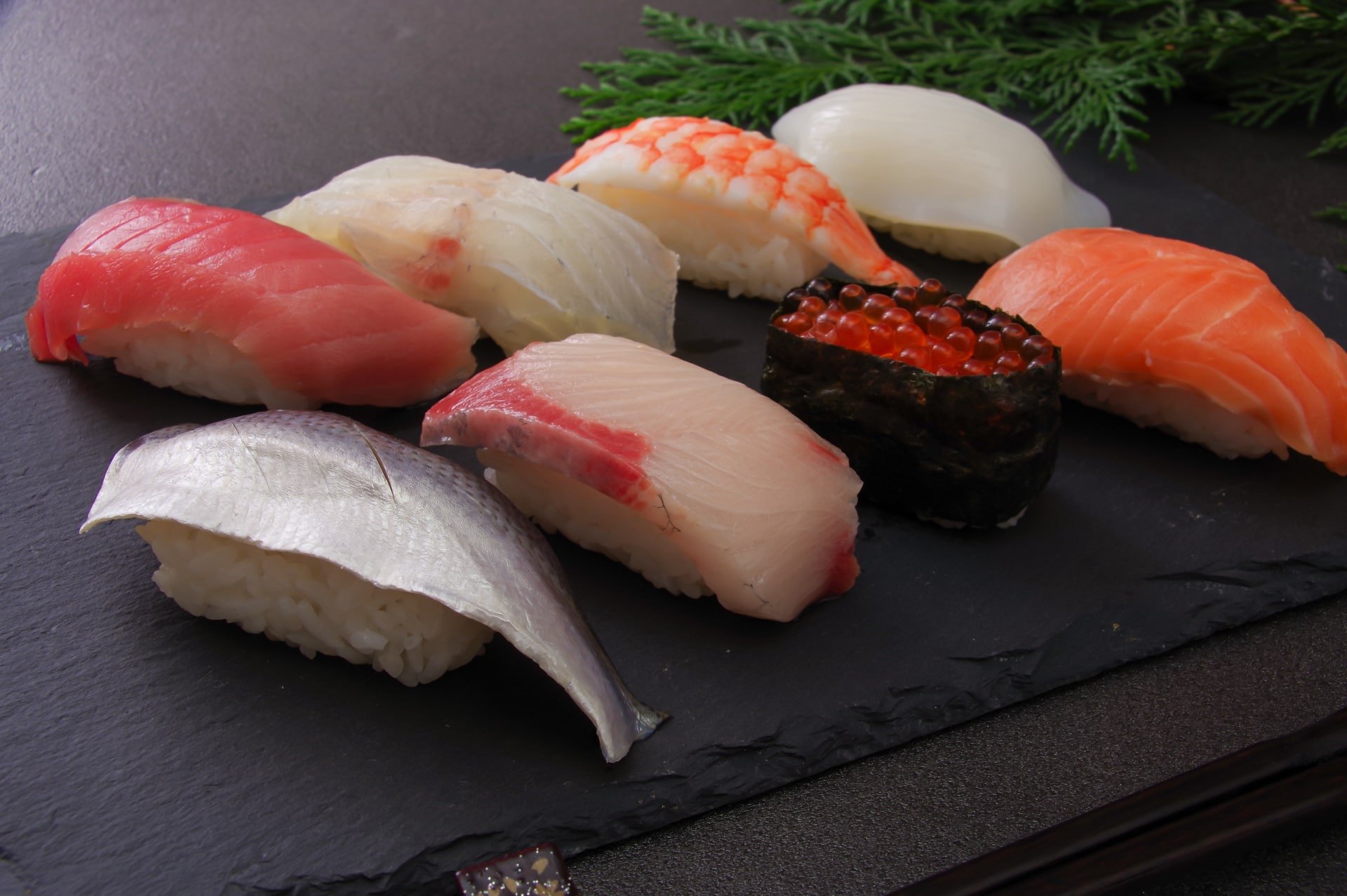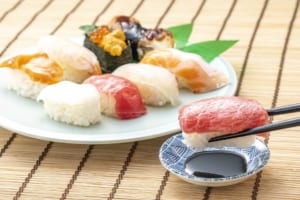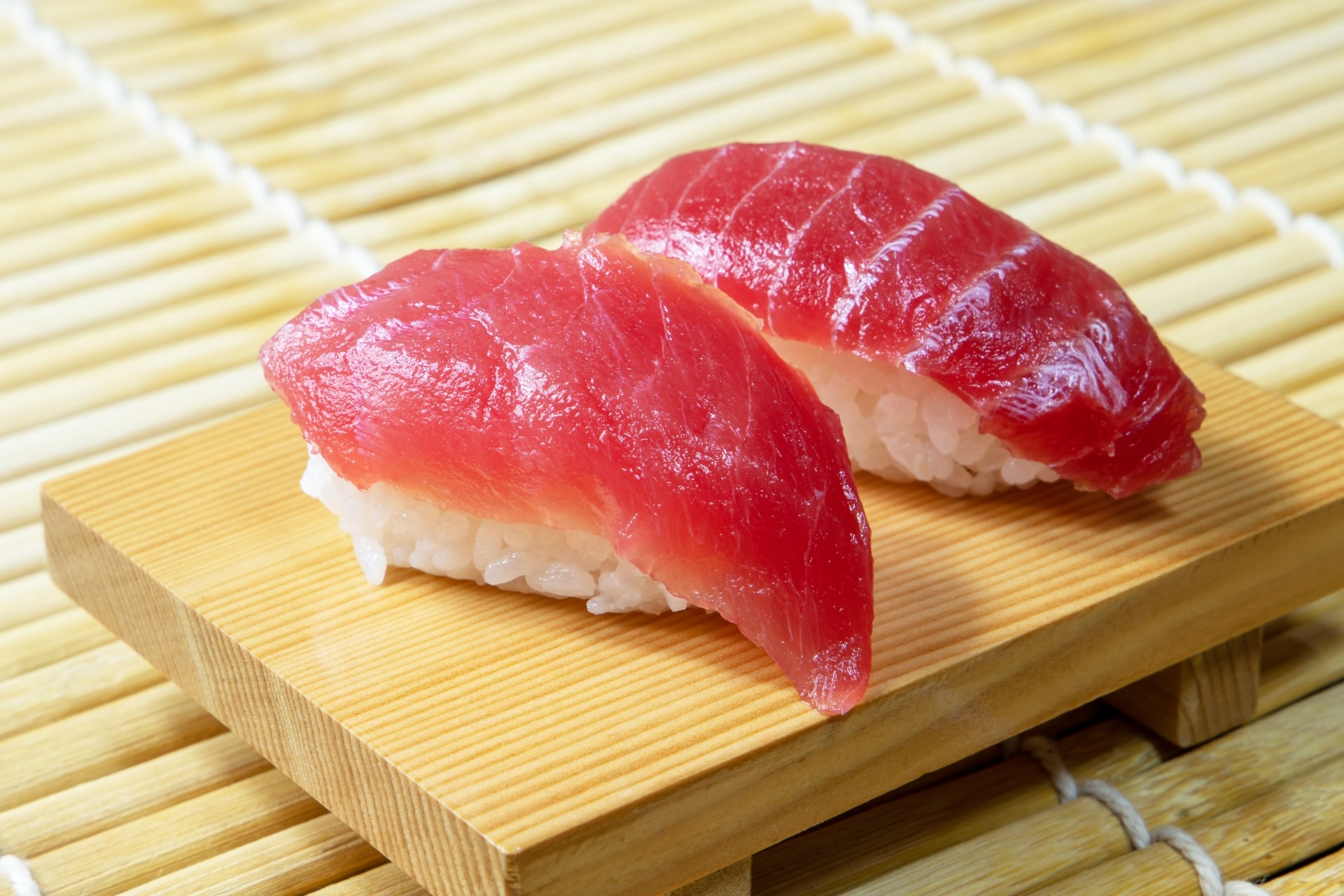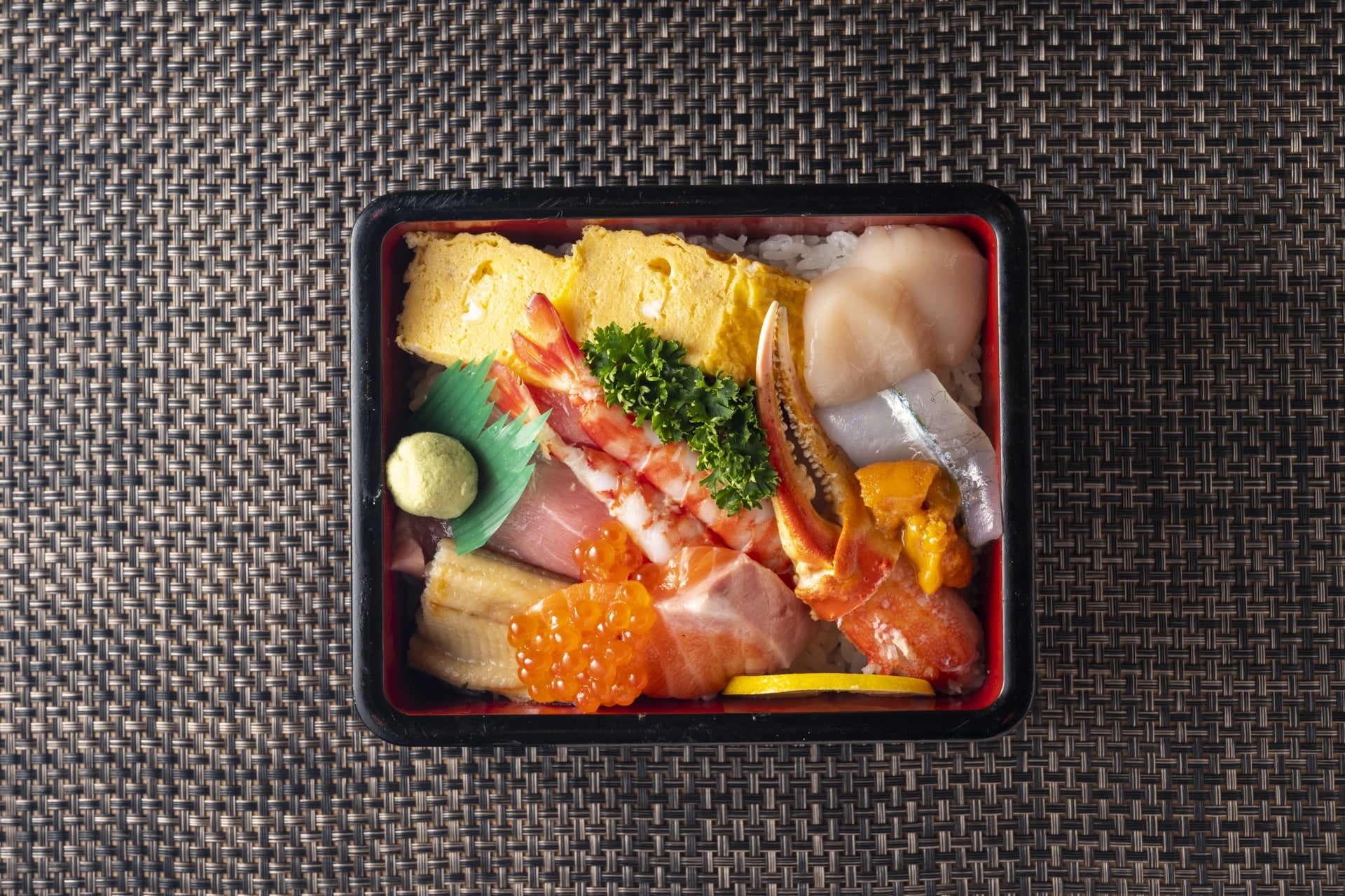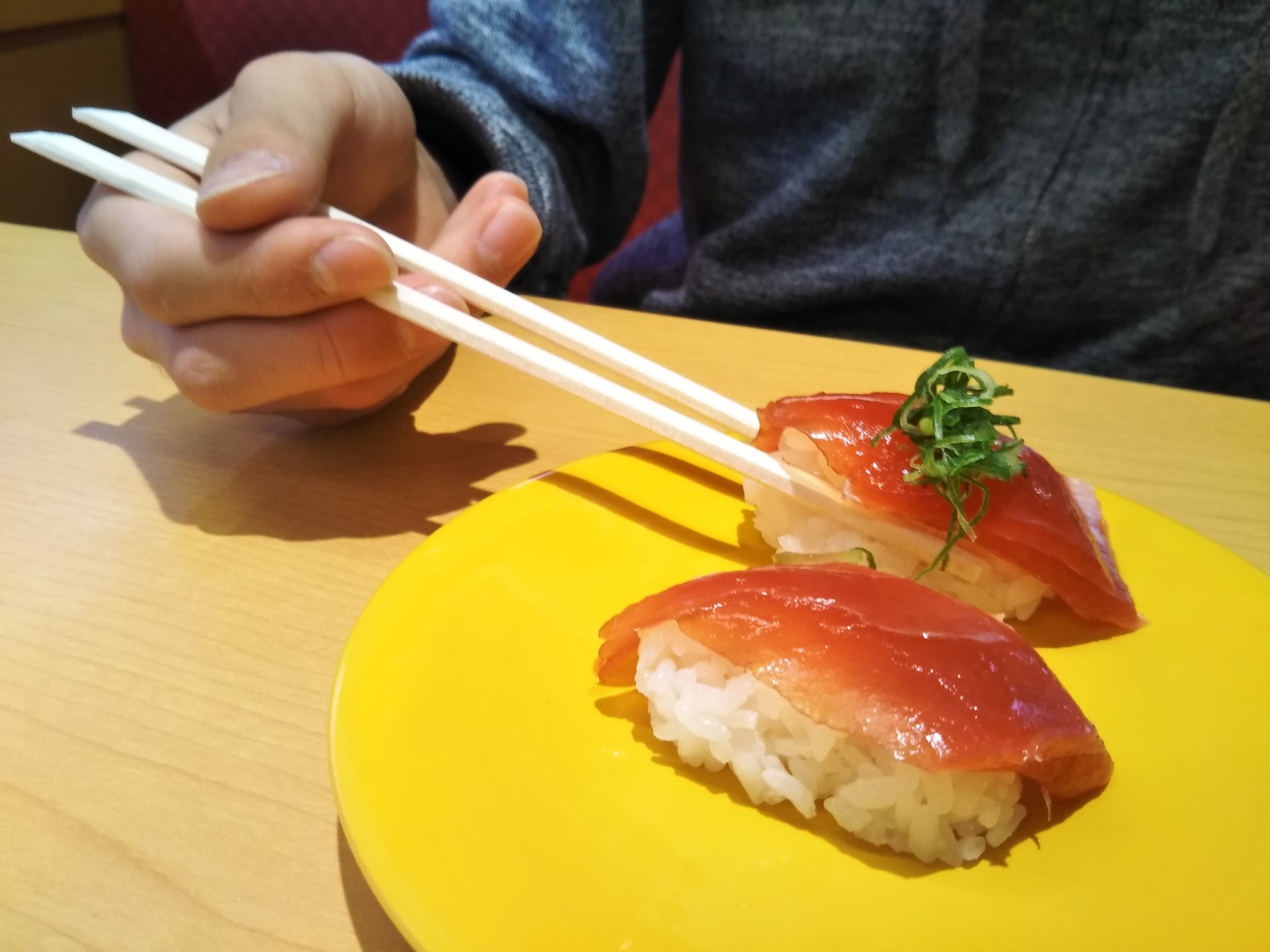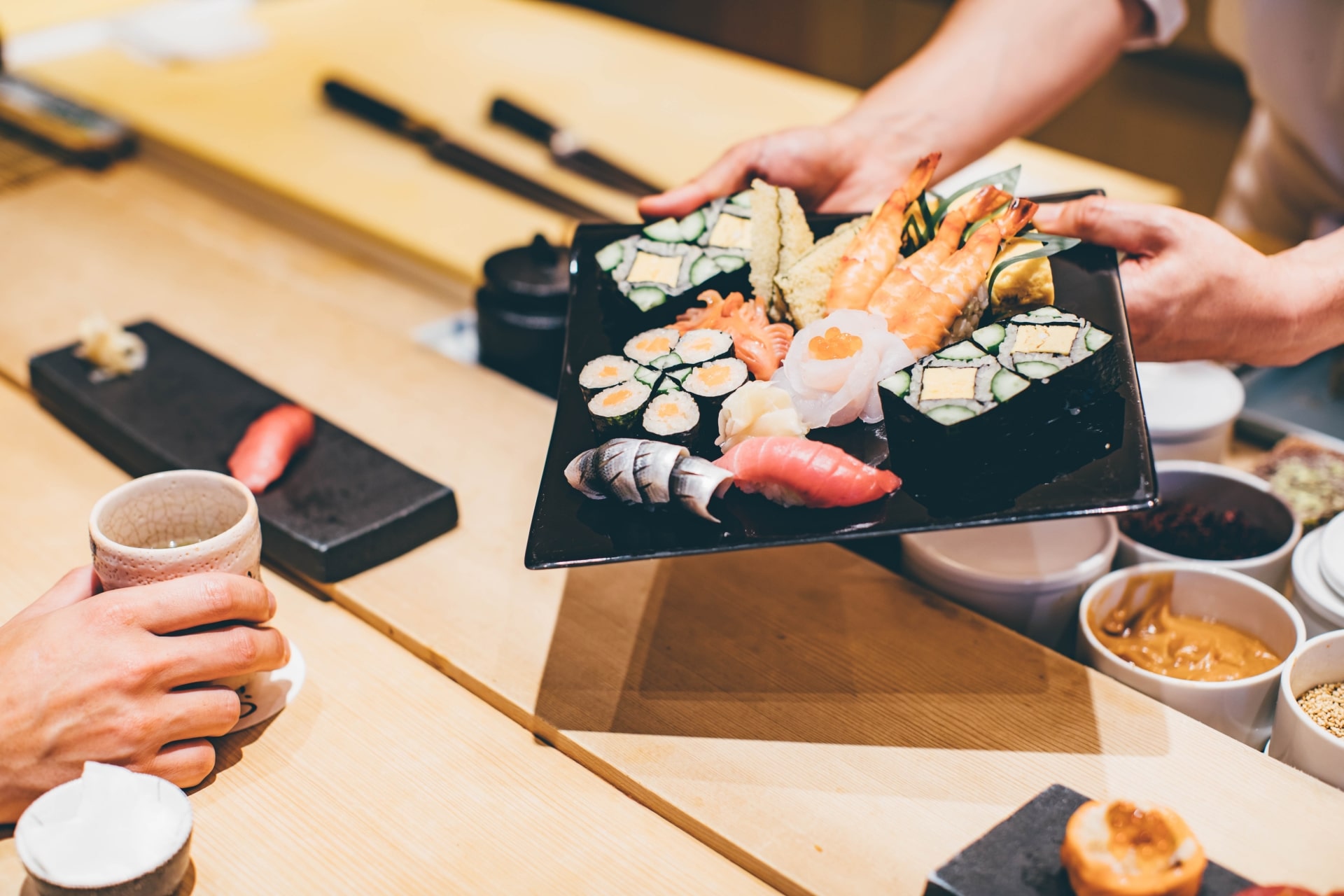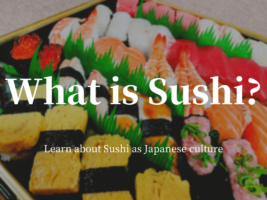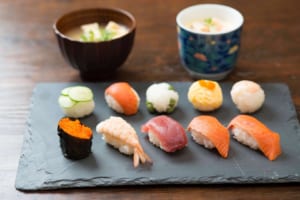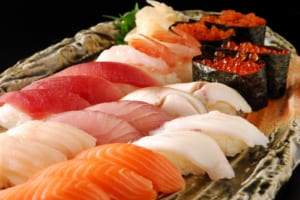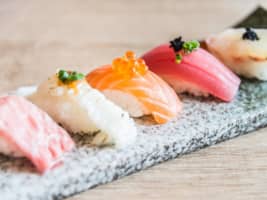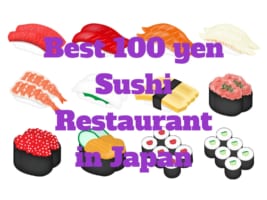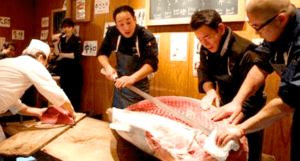9 Things You Should Know if You are a Sushi Lover
All you need to know about Sushi culture
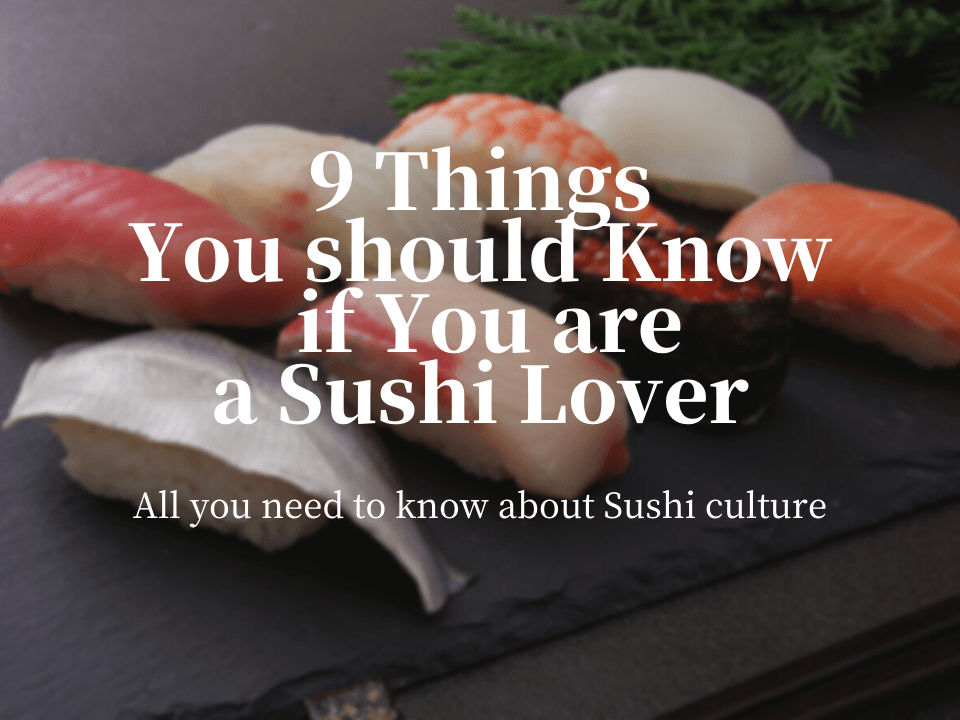
How much do you like Sushi?
Many people love sushi all around the world. The fact that sushi is the most popular food in Japan is good proof of that. You will find Sushi restaurants not only around Japan but in many places all around the world.
However, because of the fact that there are many sushi restaurants around the world, you will also find many variations of sushi. This is not a bad thing, but I think it is also important to be aware of the roots and basics of the original Japanese sushi. This, especially if you consider yourself a sushi lover.
In this article, I will introduce to you 9 things to know if you’re a Sushi lover. By knowing these facts, I will assure you your sushi eating experience in Japan will be that much richer.
1. Basic Information about Sushi
First things first. It is important to make clear the definition of “Sushi” (寿司).
Sushi, as we know it now, consists of two parts; the Shari (シャリ) and the Neta (ネタ). Shari is the rice part, and Neta is the topping.
The rice used for Shari is usually made of a mixture of Japanese rice with vinegar, salt, and sugar. This mixture was originally invented to prevent the raw fish from going bad.
Neta usually consists of raw fish. However, there are many other kinds of Neta such as vegetables, meat, and eggs.
2. History of Sushi
The history of Sushi is one that is not very widely known, even by sushi lovers. It is said that Sushi has a history of over 1,200 years and its roots are said to come from Southeast Asia.
For people living in the mountains, in order to preserve fish, people would put the fish inside a mixture of rice and salt to ferment. This method came to Japan during the Nara period (8th century), and from there it started to evolve with time.
Sushi, as we know it now, is something that came into shape quite recently. The invention of refrigeration is what most impacted sushi to be able to have such a wide variety and be served fresh and safe.
In fact, now that sushi has become so popular internationally, it is still evolving in many different ways.
▽Dig the history of sushi deeper!▽
3. Popular toppings
As I mentioned above, Sushi toppings are called Neta, and in most cases, Neta consists of fish. For your reference, here are the top 5 Neta that both Japanese and foreigners prefer.
Japanese top 5
1- Sake (鮭): Salmon
2- Maguro (まぐろ): Tuna
3- Hamachi, Buri (はまち、ぶり): Yellowtail, Amberjack
4- Chu-Toro (中とろ): Fatty Tuna
5- Ika (いか): Squid
Foreigners top 5
1- Sake (鮭): Salmon
2- Maguro (まぐろ): Tuna
3- Ebi (えび): Shrimp
4- Hotate (ほたて): Scallop
5- Ikura (いくら): Salmon roe
This is a list created by the airline company ANA. If you haven’t tried one of these toppings, you might want to try it next time you go to a sushi restaurant.
▽For the first timer, this introduces 10 most recommended sushi toppings!▽
4. Types of Sushi
Although you may have a clear idea of what Sushi looks like, you should know that there are actually various types of sushi. You may be aware of most of these, but there might be one or two types you haven’t heard of.
Nigiri sushi (握り寿司)
The most common style of sushi. It simply consists of the Neta on top of the small rice ball. In some places, this type of sushi is also referred to as “Azuma sushi”.
Chirashi sushi (ちらし寿司)
Rather than having individual bite-sized pieces, this type of sushi is different. The rice is served in a bowl or other container, and a variety of toppings are placed in a way that looks colorful and pretty.
Temaki sushi (手巻き寿司)
This type of sushi is prepared by wrapping the rice and filling using seaweed. The seaweed is wrapped in a cone shape and you can enjoy eating it holding it just like you would hold an ice cream cone.
There are actually more types of sushi, but these are the most common styles. Besides having different types, there are also small differences depending on the region such as the toppings, the soy sauce, etc.
5. Sushi Shokunin
A Sushi Shokunin (寿司職人) is what you call someone who has gone through strict training to become an expert in preparing sushi. You could call them “Sushi Craftsmen”.
It is said that it takes at least 10 years in perfecting the craft. They say it takes 3 years to perfectly prepare the rice and 8 years to perfect the Nigiri (preparing and shaping the sushi).
The training not only involves the techniques to prepare the sushi, but also you need to know how to pick the best fish at the fish market, be able to identify the amount of fat in a fish so that you can make the proper cut, and even be able to adjust the strength in which you grip the rice so that it matches the different toppings.
This training is so strict that only about 10% of those who start this training finish it to open their own restaurant.
However, this applies pretty much only at high-ranked sushi restaurants. To become a sushi shokunin is actually not necessarily required to work at a sushi restaurant.
If you go to a low-cost, conveyor belt sushi restaurant, regular employees will be trained to shape the sushi. Nowadays, there are even machines that shape the rice ball for sushi. The same can be said about sushi found at supermarkets.
But if you compare the flavor of sushi prepared by a machine with sushi prepared by a Sushi shokunin, the difference is clearer than crystal.
6. Sushi Vocabulary
Susi has its own way of referring to things. You don’t necessarily need to use these words to refer to the following, but it helps to know that these words exist.
- Shari (シャリ): Sushi rice
- Neta (ネタ): Topping
- Tane (種): Filling
- Namida (ナミダ): Wasabi
- Gari (ガリ): Sliced ginger
- Agari (あがり): Green tea
- Murasaki (むらさき): Soy sauce
- Tsuke-ba (つけ場): Sushi kitchen
- Donshari (どんしゃり): Regular rice (as opposed to the sushi rice)
- Kusa (クサ): Dried seaweed
- Kappa (かっぱ): Cucumber
This is just so you know. Customers usually don’t use this vocabulary, so don’t worry about memorizing these.
7. How to eat sushi
Having such a rich history, you might think there are proper manners when eating sushi. This is true to some extent, however, many of these unwritten rules.
Use hands? Or chopsticks?
The first thing that many people wonder about is whether you should eat sushi using your hands or using chopsticks. Some people like to eat it with their hands, while others like to use chopsticks to avoid having to clean your fingers in between grabbing pieces. The short answer is: Either way is ok.
Order of eating
Another thing people ask is if there is a correct order to eat sushi.
Some people say that you should start with the more lean white fish sushi and gradually order fish with more fat in it. This is because if you eat lean fish sushi after having tastier fish sushi, you might not be able to enjoy the taste properly. However, most sushi restaurants will tell you to order whatever you want at whatever order you want.
Other details
Be sure to eat each sushi piece in one bite. And although not a must, it is better if you eat the piece with the topping downside so that the topping touches your tongue directly.
When sitting at the counter, be sure to take off any accessories such as rings, bracelets, and watches. Also when you’re at the counter, if you want to take a picture, be sure to ask beforehand.
▽Learn all about how to eat sushi with this perfect guide below!▽
8. Ways you can eat sushi in Japan
Being such a popular food, there are many ways you can enjoy sushi in Japan. Here are just a couple of ways you can enjoy sushi in Japan.
- Traditional Sushi Restaurant: If you come to visit Japan, you definitely should go to a traditional sushi restaurant at least once. Sitting at the counter and being attended by the sushi shokunin is an experience you can only have in Japan.
▷ 5 Top-Rated Sushi Restaurants in Tokyo
- Sushi Catering: There are some sushi restaurants that have this service. Say if you’re organizing a party and want to have a sushi shokunin prepare the sushi in front of the guests, this is possible in some cases.
- Conveyor Belt Sushi Restaurant: The popular Kaiten Sushi (回転寿司). This is also a must-have experience when you come to Japan. Compared to traditional sushi restaurants, it is more pop and preferred among families with children.
▷ What is Conveyor Belt Sushi in Japan
▷ 4 Best 100 yen Sushi Restaurants in Japan
Other than these, you can also find sushi at supermarkets and convenience stores.
9. Best sushi restaurants in Japan
Here are some of our picks for sushi restaurants in Japan.
Sukiyabashi Jiro (すきやばし次郎)
Located in Ginza, Tokyo. This is one of the most well-known sushi restaurants in Japan. Many celebrities from around the world have come to enjoy its high-quality Edomae sushi (Tokyo-style sushi).
Here’s an article documenting the experience of going to Sukiyabashi Jiro.
Tenzushi (天寿し 京町店)
This is another very well renowned sushi restaurant. It is located in Fukuoka prefecture and has been in business since 1939. Their sushi is Kyushumae sushi (Kyushu-style sushi) which makes it different from the sushi that you would taste in Tokyo.
Sushi enthusiasts from all around the world come to visit.
Tsurubesushi Yasuke (つるべすし 弥助)
Located in Nara prefecture, this is the oldest existing sushi restaurant in all of Japan. It has been in business for over 800 years! The Ayu sushi (freshwater trout) is served grilled, which will be a unique experience even for sushi connoisseurs.
If you’re a sushi enthusiast and love history, this is a place you may want to check out!
For more sushi restaurants, you can check the following articles!
▷ 10 Best Sushi Restaurants in Tokyo
▷ 7 Best Sushi Restaurants in Kyoto
I hope you enjoyed this article.
▽This Complete Sushi Guide introduces all about the authentic Japanese sushi▽
Although “Sushi” as food is well known all around the world, “sushi” as a culture in Japan is something not many foreign visitors know.
What I introduced in this article is just some of the basic parts, but hopefully, this has sparked an interest in you for wanting to know much more about this fascinating and delicious culture.
If you want to know more about sushi in Japan, check out the following articles!
▽Related Articles▽
▼Editor’s Picks▼
Written by
Born and raised in Costa Rica, I started living in Tokyo from college. I love traveling within Japan & around the world. Since I wasn’t born in Japan, I know the cultural impact that you can get when visiting Japan for the first time and what you might be worried about before your trip. And I’ve lived long enough to somewhat understand the nuances of the Japanese culture that make this country such an attractive place to visit. Hopefully I can provide to you both the information you’re looking for and the information you didn’t know you needed to know.





